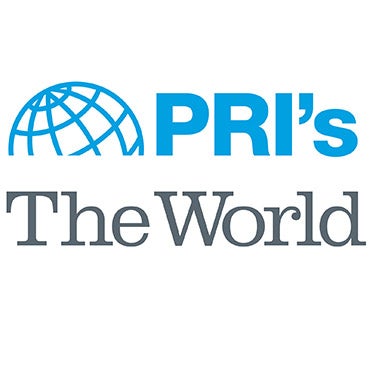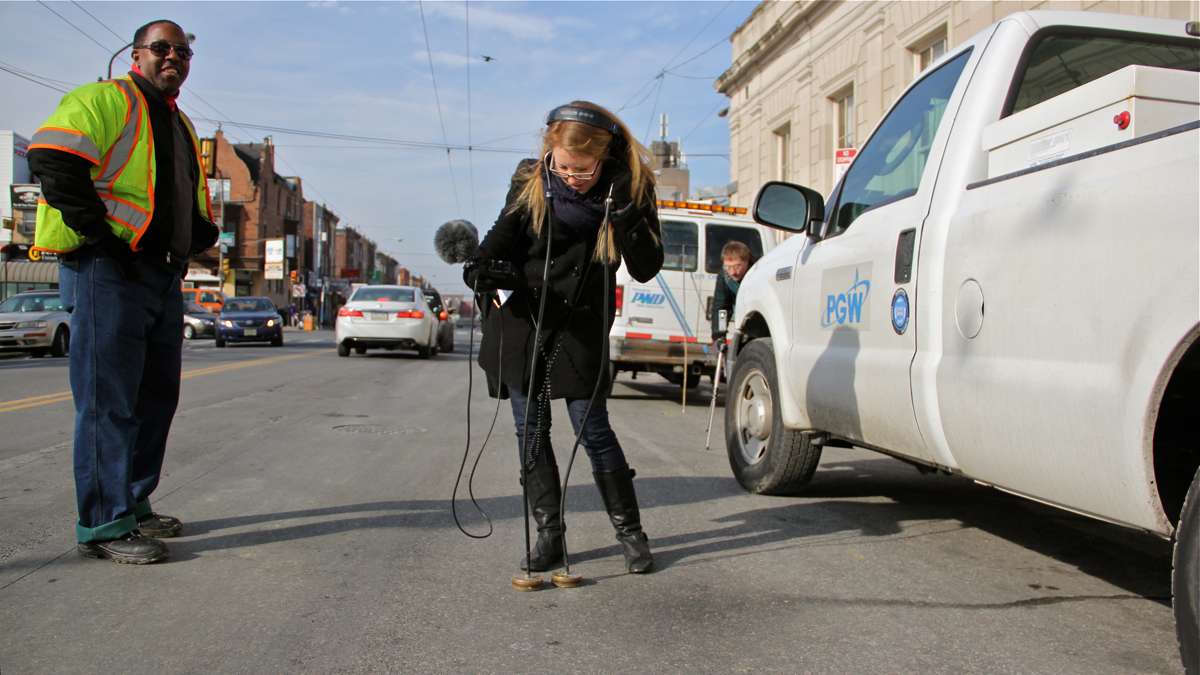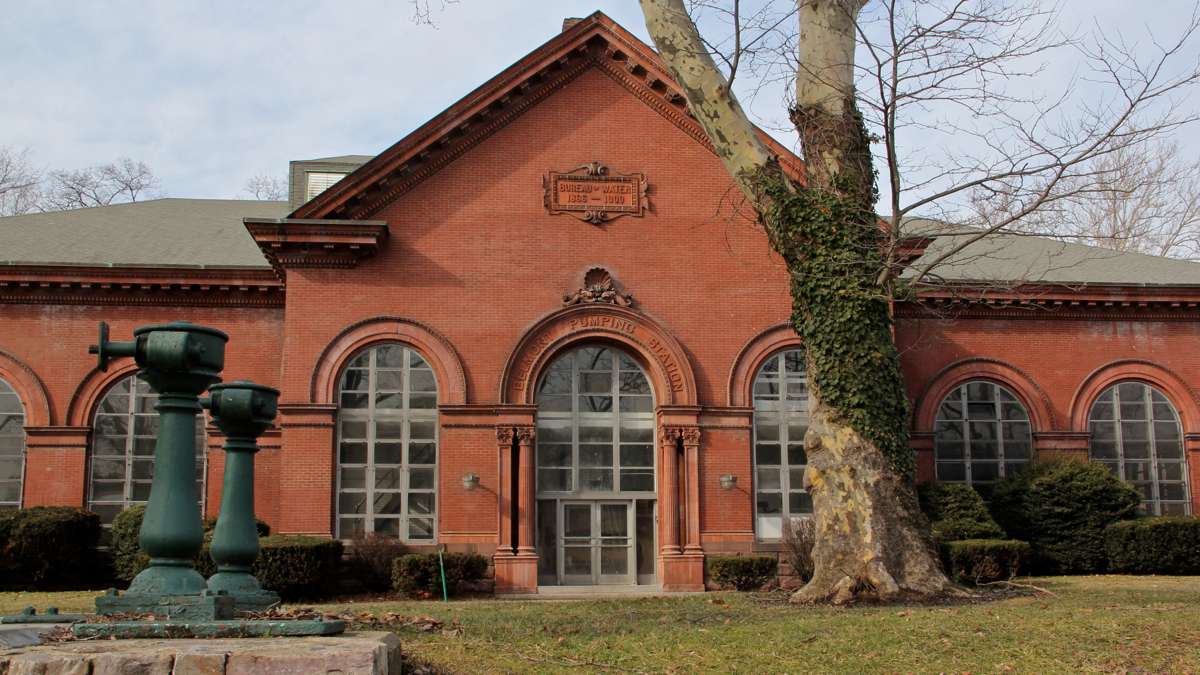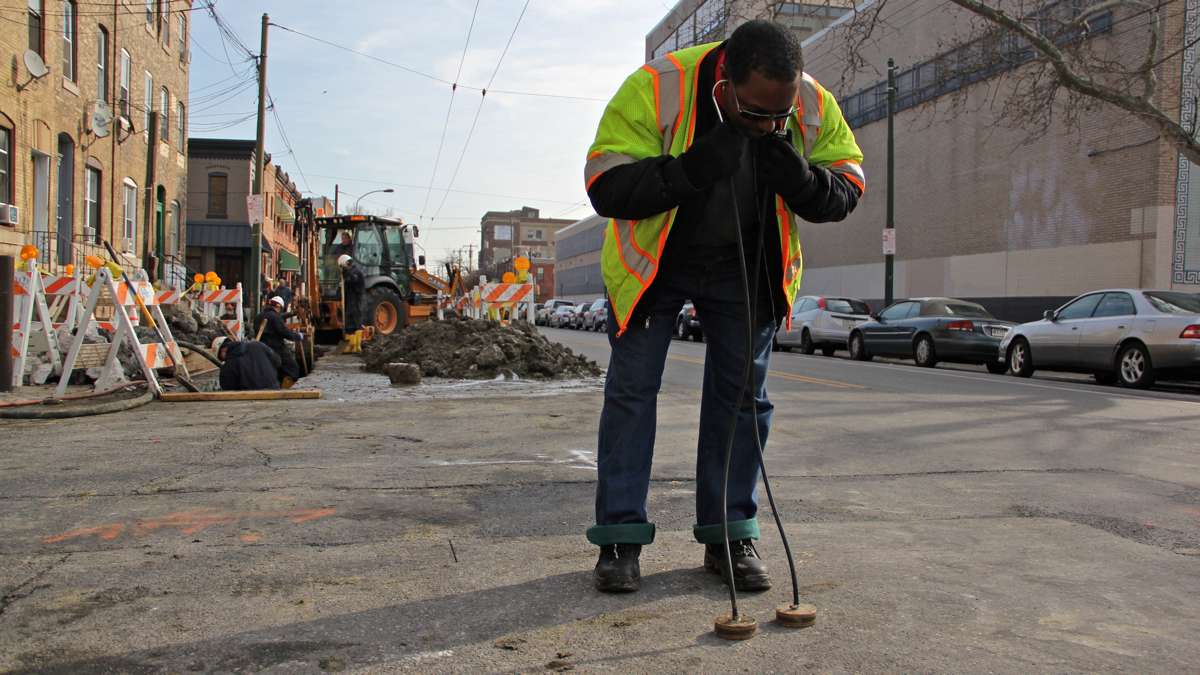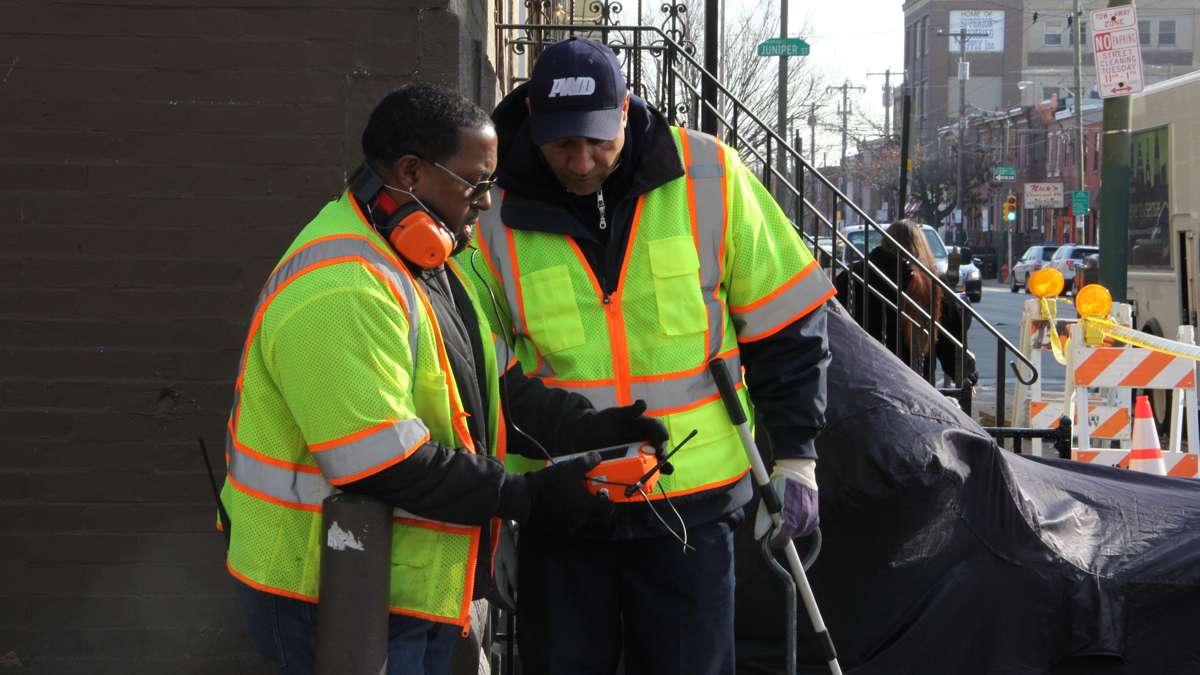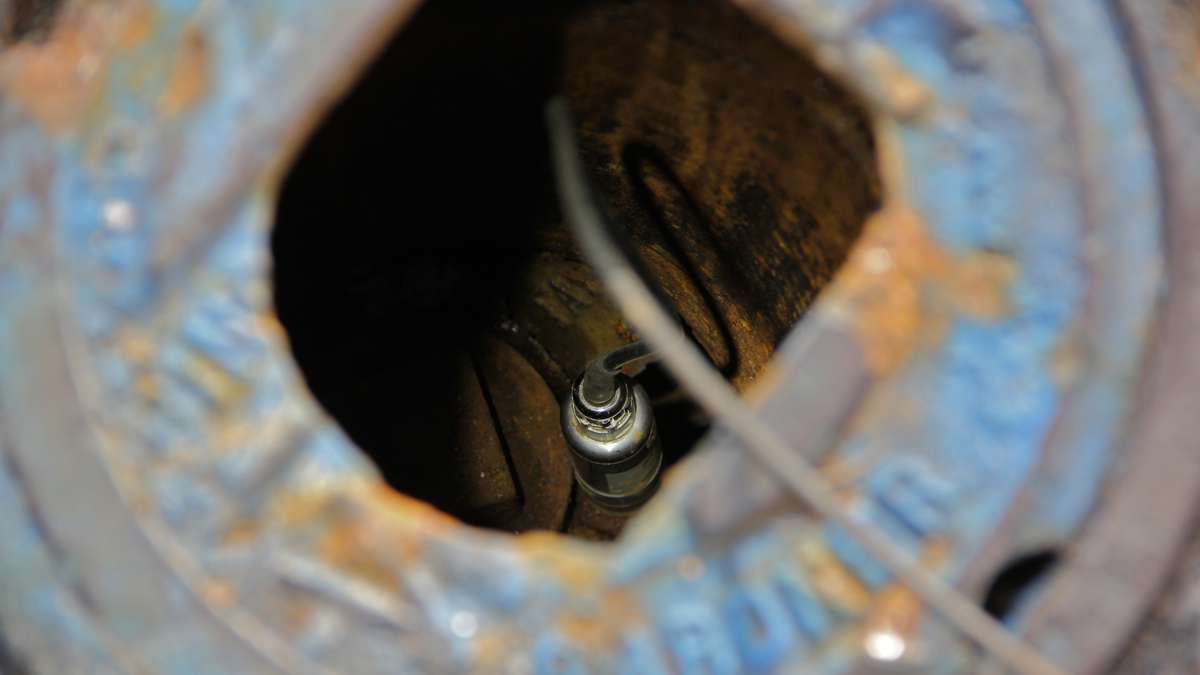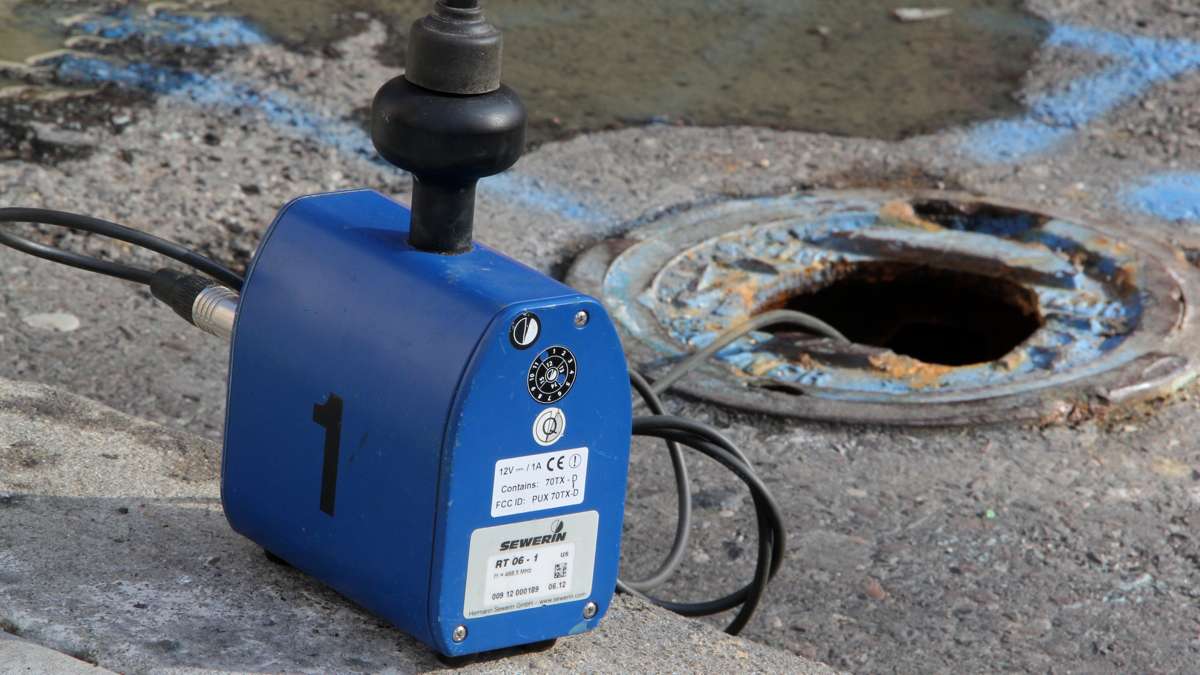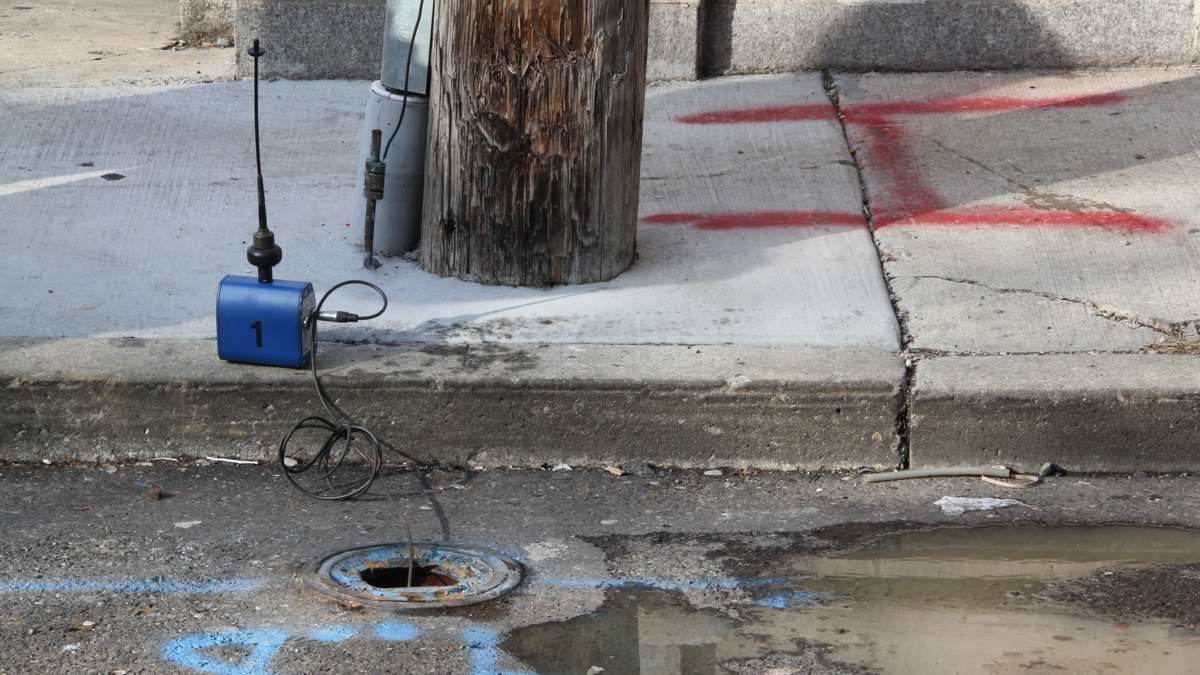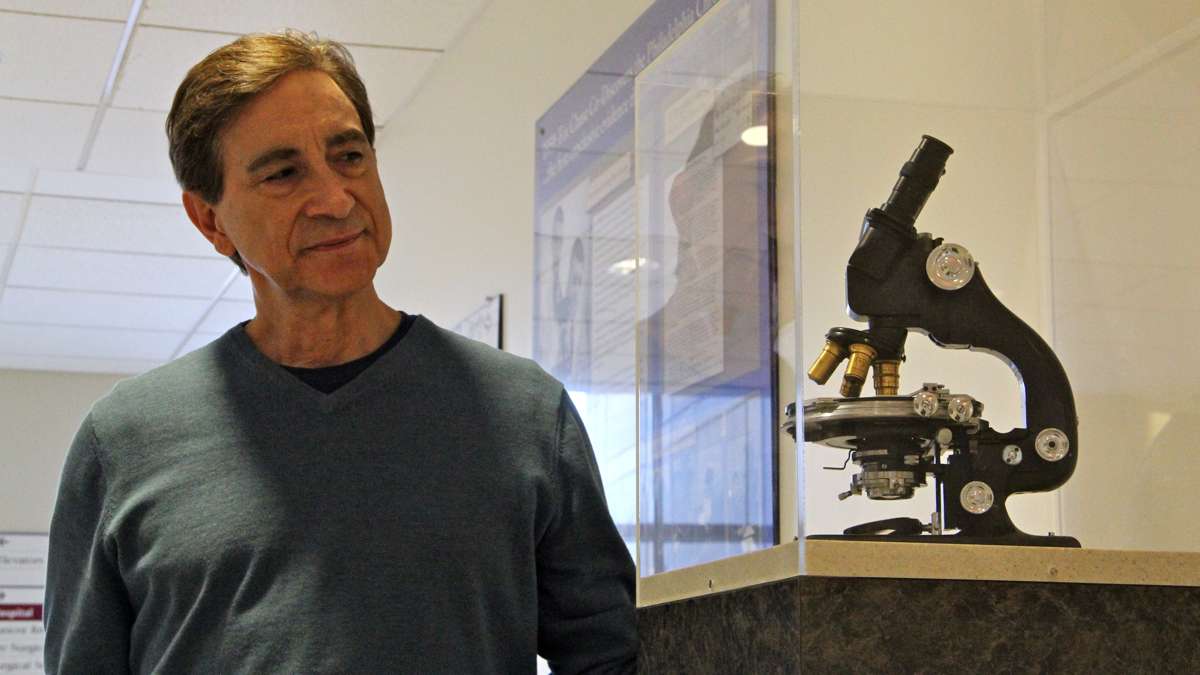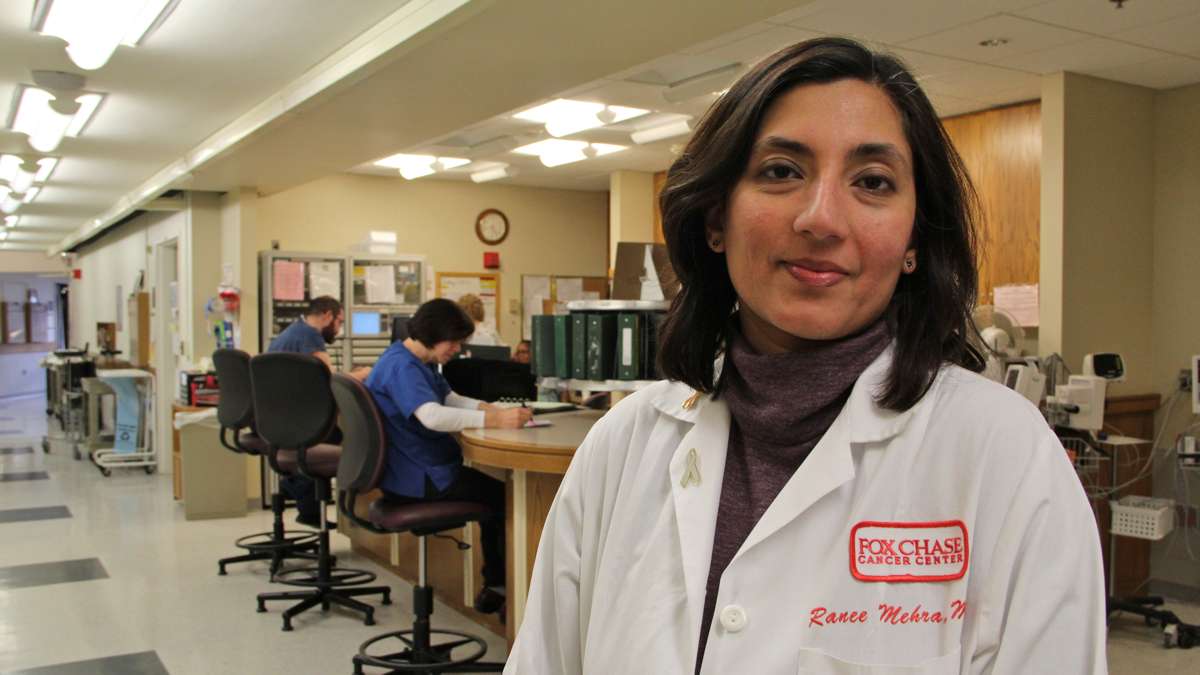55 years later, local cancer discovery still shaping research
ListenThe discovery of the Philadelphia Chromosome was a crucial link between cancer and genetics.
There is a hallway in Fox Chase Cancer Center dedicated to past successes. Display cases stand full of awards, glossy posters commemorate two Nobel Prize winners, and up on a pedestal, inside a glass box, sits a black and gold microscope.
“So this is the original Philadelphia Chromosome microscope that David Hungerford used,” says Joseph Testa, researcher and director of the Genomics Facility at FCCC.
“It is pretty primitive when you think about what we use now. I think the most amazing thing about this story is that I’ve looked through this microscope and it is amazing anyone could ever find anything,” he says with a laugh.
Despite the primitive technology, in 1959, Hungerford, then a graduate student, peered through the eyepiece and spotted something strange on the slide. Inside the white blood cells of certain leukemia patients, parts of two chromosomes appeared to have switched places.
“There’s actually a break in the chromosome, and then that piece of the chromosome moves over to another chromosome,” explains Jennifer Morrissette, director of UPenn’s Center for Personalized Diagnostics. “So you’ve got a chromosome 22 with a little bit of 9 on the bottom, and you’ve got chromosome 9 with a little bit of 22 on the bottom.”
Hungerford partnered up with Peter Nowell, a UPENN doctor, to document this genetic rearrangement.
“And so they published in 1960, and said, look, there is this small chromosome that is associated with Chronic Myelogenous Leukemia (CML). And we only see it in patients who have the disease, and not in patients who don’t,” says Morrissette.
Hungerford and Nowell dubbed mutated chromosome 22 the Philadelphia Chromosome.
It would take another 30 years to fully understand the processes in play, but researchers determine that the chromosome swap is causing two genes to pair up that usually don’t. When these genes get together, they send a signal to start making an abnormal protein, which in turn tells the cells to divide.
“That’s why when you get the Philadelphia Chromosome, the cells divide out of control,” says Morrissette. “[This] was the first evidence that cancer was a genetic disease.”
For Nowell, who Morrissette trained under, the breakthrough came with a sobering realization: it meant there likely wasn’t a single cure for cancer. If the Philadelphia Chromosome caused this single form of leukemia, other mutations were responsible for different variants of the disease. Each cancer could need its own treatment.
But on the flip side, if scientists knew which genes were malfunctioning, they could try to develop specialized therapies. And that’s what happened in the late 1990s, with a drug called Gleevec. It works by going after the single faulty protein in people with CML, effectively shutting it off so cells stop dividing.
“These people who thought they were going to die, who had been told to get their affairs in order because they did not have long to live, were now planning their next Christmas holiday with their family…were seeing grandchildren born,” says Jessica Wapner, who wrote about this advancement in her 2013 book The Philadelphia Chromosome.
Before Gleevec, 30 percent of patients with CML were alive 5 years after diagnosis. With Gleevec, 90 percent were surviving 5 years, without many of the harsh side effects of other treatments.
Precision care
Inside a procedure room at Fox Chase, radiologist Rosaleen Parsons is numbing a patient with lidocaine. She injects just below the shoulder blade, as he lies on his side, shirtless but still wearing pants and work boots.
“A lot of burning here. It is going to burn for about 10 seconds,” she tells him.
Paul, who asked we not use his last name, is 42-years old, with advanced carcinoma of the head and neck.
“He is coming in today to get a biopsy of one of these lesions, and you can see there’s multiple lesions,” says Parsons, pointing to an x-ray showing cancer spreading throughout his lungs. Using a long hollow needle, she’s going to extract a sample from one of those tumors.
“Don’t move,” commands Parsons. “Try to stay real still for me.”
With just a small amount of tissue, pathologists can run gene sequencing tests to identify possible mutations.
“We’re done. Okay, we’re all done. You did great,” she tells Paul.
Unlike CML and the Philadelphia Chromosome, his type of cancer isn’t yet linked to a single, specific malfunction. But Ranee Mehra, Paul’s oncologist, ordered the screening because if they identify genetic mutations, she can see if there are any early-stage drug trials to enroll him in.
“What we don’t know yet is if this process he went through will benefit him or not,” says Mehra. “I think it is too early to say.”
She says physicians are still adjusting to this new way of diagnosing and treating patients.
“It is overwhelming, and in some sense, our ability to do this is moving faster than our ability to know what to do with the information.”
To help make more sense of genomic data, the federal government is chipping in $215 million toward research. President Obama announced the program during his State of the Union address earlier this year.
“I’m launching a new precision medicine initiative to bring us closer to curing diseases like cancer and diabetes and to give all of us access to the personalized information we need to keep ourselves and our families healthier,” said Obama to a rare round of bi-partisan applause. “We can do this.”
That phrase “precision medicine” is getting a lot of buzz right now, and this area of research could lead to more success stories like Gleevec. But the concept of the right treatment at the right time for the right cancer has deep roots…roots that trace back more than half a century, to a microscope in Northeast Philly.
WHYY is your source for fact-based, in-depth journalism and information. As a nonprofit organization, we rely on financial support from readers like you. Please give today.
